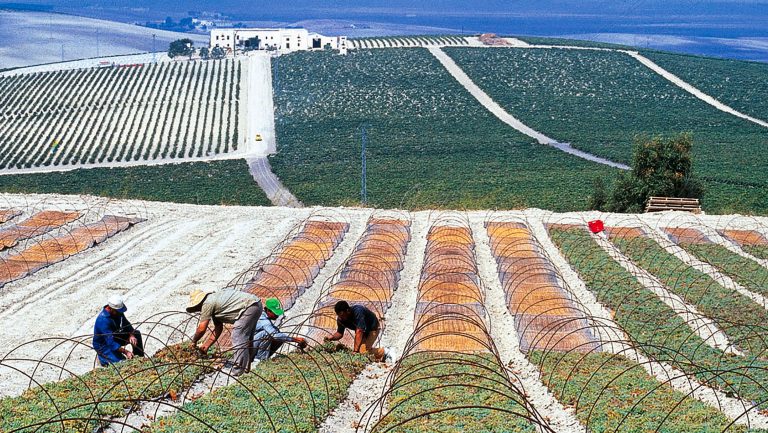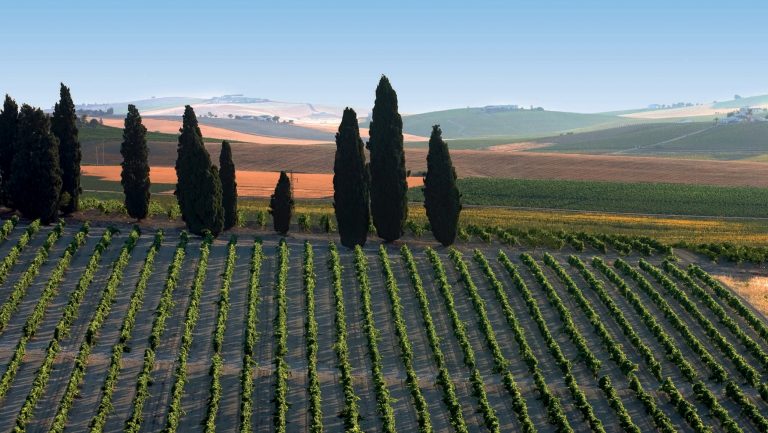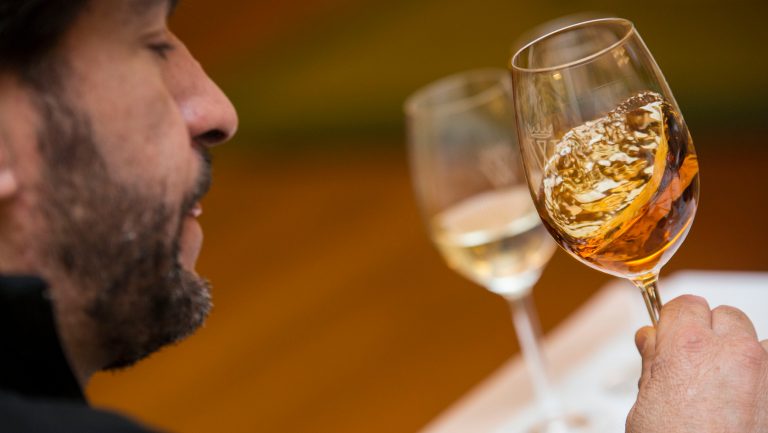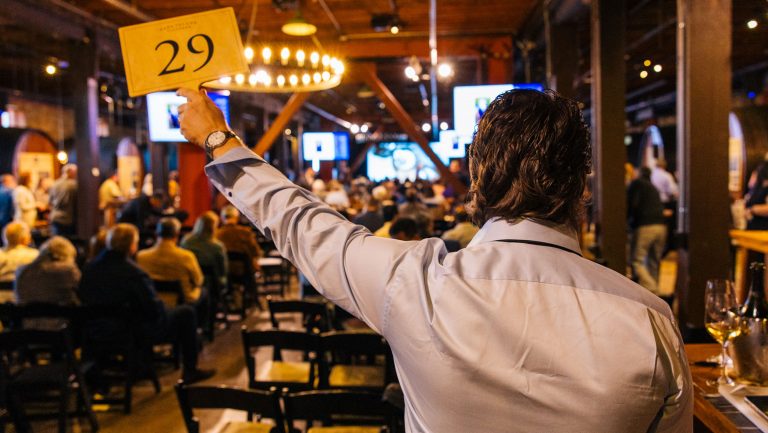Jerez-Xérès-Sherry is the oldest Denomination of Origin in Spain, established in 1935, and its wines and those of the Manzanilla de Sanlúcar DO are today defined as fortified wines (vinos generosos). Both DOs appear to be set for a rehaul as an amendment to allow nonfortified wines into the category has reportedly been passed by the European Commission and will come into effect within a matter of weeks.
“The legislation has been approved in Brussels now, and we expect it to be completed within the next month,” says Luis “Willy” Pérez of Bodegas Luis Pérez in Jerez, the producer who pushed for the amendment. “It was already approved by the Consejo Regulador and Ministry of Agriculture in Andalucia earlier this year.”
The amendment to the law will permit wines fermented to a minimum of 15% ABV for Fino and Manzanilla, and 17% ABV for Amontillado, Palo Cortado, and Oloroso. These last three will also be classified as sherry and sold within the DO classification, a privilege that had been reserved only for wines fortified by grape spirit until now.

Don’t miss the latest drinks industry news and insights. Sign up for our award-winning newsletters and get insider intel, resources, and trends delivered to your inbox every week.
The Fortified Wines of Jerez and Sanlúcar
The wine regions of Jerez and Sanlúcar have a long-standing tradition of making brandies and spirits. The addition of grape spirit to wines was popularized in the 17th and 18th centuries in order to stabilize the wines for long voyages overseas to the New World, as well as to the growing sherry market in the U.K.
Although a majority of sherry producers fortify their wines today, fortification is a relatively new method of making these wines; the producers who requested the amendment are seeking to return to more traditional methods of vinification.

Rediscovering Historic Artisanal Sherry Production
Sherry producers have historically achieved high sugar (and ergo high alcohol) levels through a late harvest, or by leaving grapes to partially dehydrate by means of the asoleo (sun-drying) technique. Using this method, winemakers can achieve the same alcohol levels and biological stability as fortified wines without the addition of grape spirit.
“This was actually the traditional way to make wines in Jerez—for sherries and also dry wines,” says Pérez, who makes all his sherries without fortification. “It was because of the associated cost that many sherry producers started fortifying instead. For example, to make our sherry wines, we split our vineyards by soil type, and then into different pagos and parcelas [single vineyards and single lots]. We [individually] harvest each of the 43 grape varieties with a minimum of three different harvest dates. It’s a lot more work than [just] harvesting the entire vineyard together and adding grape spirit.”
Bodegas Luis Pérez is best known for its La Barajuela line of sherries, each of which is sold as a single vintage (rather than common multivintage solera-produced wines) with 15 different harvest dates. “The first harvests are for acidity, and the last are for sugar—that way we don’t need to acidify or fortify,” explains Pérez. All this extra labor causes a significant hike in production costs, and La Barajuela sherries can reach over $100 retail on the U.S. market.
All that extra effort is worth it. “There’s a huge difference in these wines,” says Pérez. “It isn’t just about fortifying or not, but if you follow this process, we can make a natural sherry wine without needing to fortify, acidify, or add sulfur—and we can show the different vintages, different soils, and different varieties. It’s really beautiful when you read about these [once common] sherry wines in books written in the early 1900s and can make them in the same way today.”
A Shifting Attitude in Jerez
Although Bodegas Luis Pérez is the only producer that will be directly affected by the amended legislation for now—it is the only winery with a commercial production of sherries made without fortification—the legislation’s ripple effect could spotlight the reinvention now happening in Jerez.
“At the moment, this way of making sherry is totally under the radar, even for the boutique wine drinker,” says Adam Rieger, a brand manager for the importer and distributor Polaner Selections, based in Mount Kisco, New York, which imports the nonfortified sherries of Bodegas Luis Pérez. “For the smaller, hipster sherry community, though, there’s a real hunger for these wines—and that’s the benefit of being in New York, where there’s a market for this. But what’s important about this legislation is [that] it should hopefully affect the small growers, potentially helping them get more money for their grapes and make their own artisanal sherries, too.”
Cheryl Wakerhauser, the owner of Bar Vivant in Portland, Oregon, lists 170 sherries on the wine list. She agrees that this new legislation should have a positive effect in bringing a renewed interest to more artisanal production of sherry. “If winemakers are willing to put in the extra time, effort, and learning to make an unfortified wine that can achieve the same alcohol by volume as simply adding neutral spirits,” she says, “that can only further the development and interest in the wines and the region.”

A Growing Diversity of Nonfortified Wines in Jerez
This artisanal approach is part of a new wave of terroir-focused sherries and wines emerging in Jerez. In recent years, several producers have released single-vineyard offerings, explored ancient clones of the Palomino grape, and rescued other ancient varieties of the region for wine production.
Although the new legislation will permit nonfortified sherries into the category, it will not affect the growing number of nonfortified wines made in the region.
Eduardo Ojeda is the co-owner and winemaker at Equipo Navazos in Sanlúcar, where he annually produces 25,000 bottles of nonfortified still wines from multiple regions like Jerez and Sanlúcar, often aged under flor, as in the case of the modern cult favorite La Bota de Florpower. “Wines like Florpower won’t be included with the new change of legislation, because they are under the minimum alcohol requirement of 15 percent,” Ojeda explains. He sells Florpower under the declassified catchall denomination vino de mesa because its flor character simply doesn’t fit with the status quo—it is often rejected by the Consejo Regulador tasting panel. “There’s a lot of discussion about how to communicate [about this new category] of wines, but we need more time and more engagement to do this.”
Although there’s been much press attention and buzz about sherry and nonfortified wines from the region, Ojeda says that the grim reality is that sherry consumption is still on the decline and that the wines lack consumer power. Says Ojeda, “We have an expression in Spanish—‘Mucho ruido y pocos nueces’ [which can be translated loosely as “Much ado about nothing”]—and sherry and our nonfortified wines in Jerez fall into that. We are still only talking of very few bottles really, and [we] need more interest from the general public to grow.”

Although sherry production and consumption have been trending downward for the last two decades (sherry production is two-thirds what it was in the early 2000s, and 2018 saw a 6 percent drop in sales compared with the year before, according to the Consejo Regulador), the U.S. is one of the few countries in which sherry imports increased last year, from 1,232,246 liters in 2017 to 1,242,800 liters in 2018.
Rieger of Polaner Selections hopes that the growing category of nonfortified wines from Jerez will offer an opportunity to lure wine consumers to sherry in the future. “These dry wines and vintage wines from Jerez, which have a bit of flor,” he says, “are not so far removed from regular white wines, which I think will begin to get consumers interested in the region. Hopefully they’ll follow the producer—and then start getting into sherry.”

Dispatch
Sign up for our award-winning newsletter
Don’t miss the latest drinks industry news and insights—delivered to your inbox every week.
Amanda Barnes is a British wine writer who since 2009 has been based in South America, where she specializes in the wines and regions of Argentina, Chile, Brazil, and Uruguay and writes the South America Wine Guide. Ever footloose, she is currently on a mission to travel Around the World in 80 Harvests.







